Feats are an optional rule that many D&D campaigns choose to use to let players customize their characters even more deeply than just choosing a race, class, background, and subclass. The feats in the Player’s Handbook give characters the ability to improve their skills as a combat master, social savant, or exploration expert in various specific ways—and the new feats in Tasha’s Cauldron of Everything continue this tradition.
Check out these fifteen new feats! How can you use them to enhance your character’s story, or grant them explosive new powers?
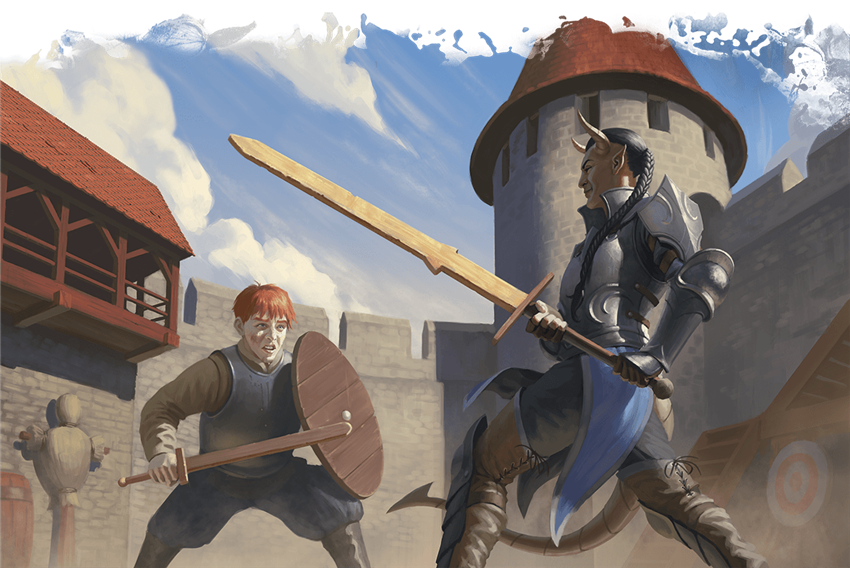
Artificer Initiate
It takes a long road of grueling training to become an artificer. You’ve only just taken a first step down that path, and have learned how to cast some basic artificer spells, as well as gaining proficiency in a type of artisan’s tools that you use to craft your artificer spells.
Remember, artificers “cast spells” not by waving wands and mouthing incantations, but by rapidly creating magical gadgets. If you take this feat, think about how you cast your artificer spells—do you create a pocketwatch that covertly shoots a beam of destructive magical energy like a fire bolt? Or perhaps you know how to whip up an alchemical phial that explodes into a grease trap.
Feats or Multiclassing?
Feats and multiclassing are both optional rules presented in the Player’s Handbook that allow a player to give their character gain powers normally inaccessible to their class, and to give their character narrative depth and nuance through new mechanics. Some gaming groups use both optional rules for maximum customizability, while other groups allow one, the other, or neither, to keep their game simpler or more focused.
The Magic Initiate and Martial Adept feats in the Player’s Handbook are both feats that give characters a taste of another class by granting access to basic spells and martial maneuvers. Tasha’s Cauldron of Everything includes several new feats that work this way: Artificer Initiate, Eldritch Adept, Fighting Initiate, and Metamagic Adept, allowing you to gain a little bit of the power of the artificer, warlock, fighter, and sorcerer classes respectively. If you want to get just a little flavor or power from one of these classes, but don’t want to multiclass (or your group doesn’t use multiclassing rules), these feats are a great way to do so.
Also, if you decide to take one of these feats and ultimately decide you want to multiclass into that class later, you can keep this feat and just have a few extra spells. However, if you want to diversify your skillset, you can also ask your Dungeon Master if they'll allow you to swap this feat out when you gain your first level in that class. They could let you trade your feat for any other feat, or for two +1 bonuses to any ability score.
Chef
You are a master chef! Not only do you have a knack for creating world-class meals, but your culinary creations are so good that they fill all who eat them with enhanced fortitude. They can heal more when they consume your cooking during a short rest, and you can make treats that give them a morale-boosting surge of temporary hit points.
Crusher
This feat is one of a trio of feats that improves your skill with a certain type of physical damage. As a crusher, you are a master of inflicting heavy wounds with bludgeoning weapons and knocking foes around the battlefield as you pummel them silly. This feat synergizes particularly well with monks’ ability to make many unarmed strikes in a single turn.
Eldritch Adept
Have you ever been tempted by magical secrets beyond your ken? Most spellcasters study hard to master the magic of their ancestors, or the magic within them, or magic they found in ancient tomes—but the temptation to take the quick and easy route, to find an otherworldly patron who will gift them untold power, is omnipresent. This feat grants a spellcaster one Eldritch Invocation from the warlock class, which they can change as they level up.
Fey Touched
You have been exposed to raw power from the Feywild, a plane of powerful and tempestuous emotions. This feat represents your connection to the capricious power of the fey by granting you a small bonus to one of your ability scores and the ability to cast misty step and another spell from a particularly fey list.

Fighting Initiate
You’ve undergone rigorous martial training in your downtime, though not enough to become a full-fledged fighter. Instead, you’ve learned how to fight with a particular weapon, allowing you to gain a Fighting Style from the fighter class. Don’t forget that there are a handful of brand-new Fighting Styles in Tasha’s Cauldron of Everything including options for fighting bare-handed, fighting blind, and fighting with thrown weapons.
Gunner
Want the rakish fantasy of being a stylish gunslinger? In addition to granting similar bonuses to the Crossbow Expert feat from the Player’s Handbook, this feat grants you proficiency with firearms, which are described in the Dungeon Master’s Guide.
Metamagic Adept
Sorcerers are masters of using their internal power to modify their spells. You, too, have a small wellspring of this power that allows you to exert your will to twist the nature of your spells. You now have a small pool of sorcery points and two Metamagic options from the sorcerer class to spend them on.
Piercer
Another member of the trio of physical damage feats, this one makes you a master at delivering deadly wounds with piercing weapons by allowing you to reroll damage dice and dealing more damage on a critical hit. A great tool for rogues who use piercing weapons like shortswords and rapiers to deal deadly sneak attacks!
Feats a la Carte
You can gain access to all of these feats by purchasing Tasha’s Cauldron of Everything on the D&D Marketplace, but did you know you can also buy just a single feat—and have the cost of that feat discounted from the book’s full cost if you decide to buy it later? Check out the Marketplace page for Tasha’s and scroll down to see all of the options you can get a la carte if you don’t want the full book now.
Or, consider getting Tasha’s as a gift for the D&D players in your life. Check out the D&D Beyond 2020 Gift Guide and discover how to give the gift of D&D Beyond!
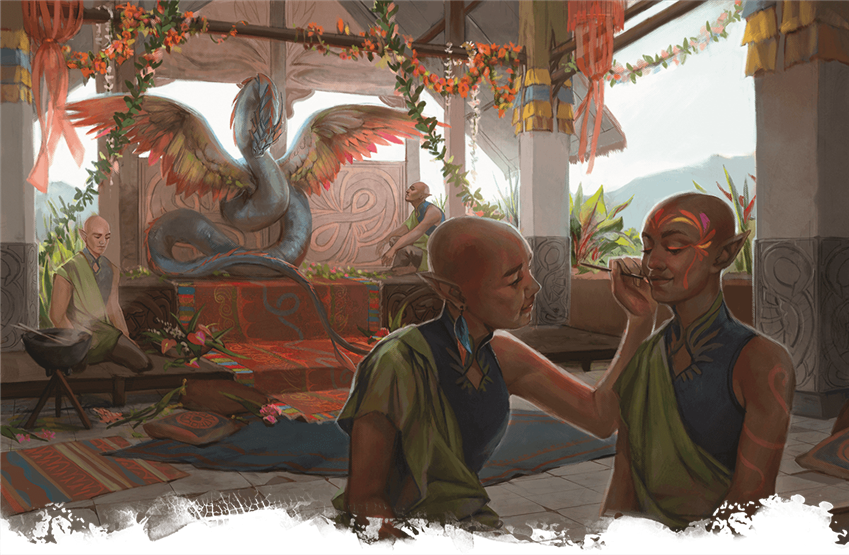
Poisoner
Poison is a tricky thing to use properly, especially when beings like dwarves have constitutions hardy enough to cause even deadly poisons to just give them an aching hangover. This feat lets you ignore resistance to poison damage, poison your weapons rapidly, and even create deadly poisons with a poisoner’s kit. Just beware, creatures with magical biologies like undead, constructs, and most fiends are still immune to poison—no amount of masterful skill can bypass that!
Shadow Touched
Akin to the Fey Touched feat mentioned earlier, a character might gain the Shadow Touched feat from being lost in the drab and ghastly landscape of the Shadowfell. In addition to improving one of your ability scores, you also gain the ability to cast invisibility, as well as another shadowy spell.
Skill Expert
This is a mighty skill for any adventurer to have, but it’s especially useful for bards, rogues, and any other talented expert that might be lovingly called a “skill monkey.” By granting you proficiency in an extra skill and expertise in any skill you’re proficient in, it makes you a master of whatever craft you choose to specialize in.
Slasher
The final of this book’s trio of physical damage-enhancing feats, Slasher makes you a master of slashing weapons. It’s a particularly powerful tool for anyone with natural claws like tabaxi monks or Path of the Beast barbarians, since it lets you hamstring foes to reduce their speed and grievously wound them with critical hits to impose disadvantage on their attacks.
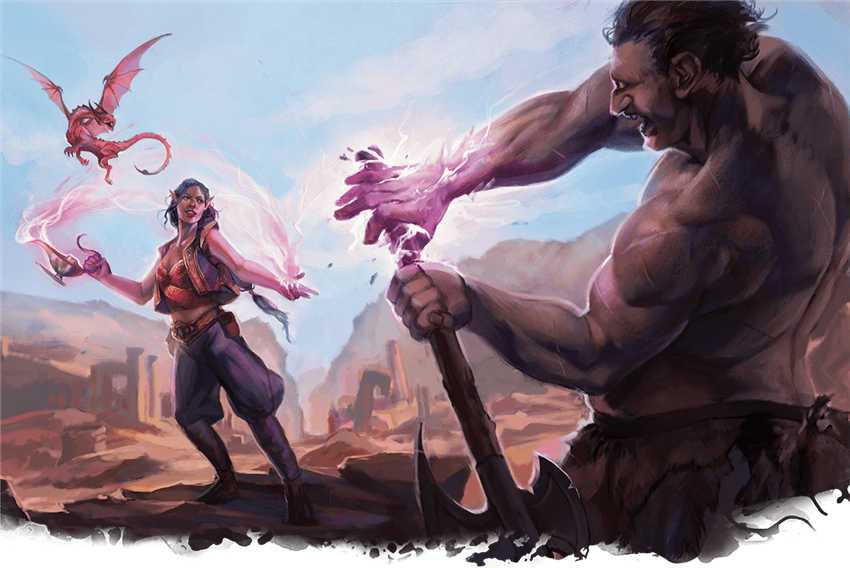
Telekinetic
Anyone studying to be a Psi Warrior would do well to embrace the power of telekinesis, the ability to move things with your mind—and even use that power to shove creatures with your mental force. Combine this feat with a variant human who gains a feat at 1st-level to represent a character born with latent psychic power!
Telepathic
The sister feat to Telekinetic, above, the Telepathic feat gives you the ability to speak to other creatures with your mind. Your powers of telepathy allow you to communicate in a language you know, and to read their thoughts. Great for communicating secrets silently with your party members in tense scenarios—or for spooking patrolling guards and learning your foes’ deepest secrets!
These fifteen feats all provide great ways to enhance your characters’ power and deepen their stories. Check them all out in Tasha’s Cauldron of Everything, available now in the D&D Beyond Marketplace!
Create A Brand-New Adventurer Acquire New Powers and Adventures Browse All Your D&D Content
 James Haeck is the lead writer for D&D Beyond, the co-author of Waterdeep: Dragon Heist, Baldur's Gate: Descent into Avernus, and the Critical Role Explorer's Guide to Wildemount, a member of the Guild Adepts, and a freelance writer for Wizards of the Coast, the D&D Adventurers League, and other RPG companies. He lives in Seattle, Washington with his fiancée Hannah and their animal companions Mei and Marzipan. You can find him wasting time on Twitter at @jamesjhaeck.
James Haeck is the lead writer for D&D Beyond, the co-author of Waterdeep: Dragon Heist, Baldur's Gate: Descent into Avernus, and the Critical Role Explorer's Guide to Wildemount, a member of the Guild Adepts, and a freelance writer for Wizards of the Coast, the D&D Adventurers League, and other RPG companies. He lives in Seattle, Washington with his fiancée Hannah and their animal companions Mei and Marzipan. You can find him wasting time on Twitter at @jamesjhaeck.








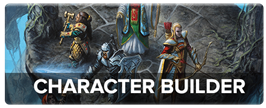
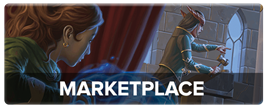
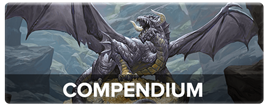
-
View User Profile
-
Send Message
Posted Dec 13, 2020Uh..Chef is exceptionally useful, especially when there are no clerics in your group. Knowing Cooking Utensils allows an extra HP per HD burned on a on a Short Rest. You stack that with the Chef feat, and now, on a short rest, when a player eats from a meal prepared by the Chef, and burns a HD, they get an additional d8+1 HP. That is a big deal. Inspiring Leader works only with Temp HP, which is useless in conjunction with many subclasses / spells. Now, I can imagine a real edge case char, one that focuses on non-Cleric healing, and nothing much else, and burns 2 ASI's for Feats: A Halfling Bard happily singing to his friends while making Middle Breakfast, while having Inspiring Leader, Chef, and Song of Rest all stacking.
-
View User Profile
-
Send Message
Posted Dec 14, 2020I had an orcish paladin in 3e who would have loved the chef feet.
-
View User Profile
-
Send Message
Posted Dec 14, 2020You could also have Painter's Tools and paint magic runes on something to make it explode(or do something else but is there any real reason not to make it explode?). Or Cartographer's tools which let you figure out exactly where to have your battles so that the terrain "just happens to" spontaneously erupt and shower your enemies in rocks.
-
View User Profile
-
Send Message
Posted Dec 14, 2020Why is it that since August, only this one author has written anything? What happened to the other authors?
-
View User Profile
-
Send Message
Posted Dec 15, 2020So I assume this book is already ready to go from day one. But it's taken more than a year and still nothing on class feature varients. Sure some of that stuff might or might not be in this book. But it's nice to see that you sure can get a whole books worth of stuff done quickly when needed. But a small PDF was just so hard and you had to do it "just right". Just admit you didn't want to do it in the first place.
-
View User Profile
-
Send Message
Posted Dec 16, 2020It would be nice if there was something for Dragonborns. The current dragonborn racial feats are either terrible or very weak. When you think of each race, each one has a specialisation or theme. Halflings are lucky, tieflings have resistance and innate spellcasting, elves are dexterous and ethereal, half-orc hit hard and take hard hits.
What are dragonborn, they're worse versions of a half-orc with a once per short rest cantrip (breath weapon). As for their racial feat, you have one that swaps their dragonbreath for a once per short rest fear, or the other is an armour calculation that will most likely never get used, and extra damage to unarmed melee which lets face it, is pointless. To return to my question, what makes a Dragonborn? How about something that if it's going to cost a feat, make it worthwhile. How about a feat that gives +1 to all saves to show dragonborn has some of the draconic resilience from their namesake. How about some true sight to reflect draconic vision. Something!
-
View User Profile
-
Send Message
Posted Dec 16, 2020I have a Triton Gunslinger (Fighter). His name is Kash. He took the Gunner feat at 1st. (We played Dragonmarks like feats, and you get Dragonmarks at 1st level, so why wouldn’t we get feats on first level.) And then on third, he got the critical role subclass, Gunslinger. And the gunner feat allows you to not have to reload firearms, so cool feat.
-
View User Profile
-
Send Message
Posted Dec 16, 2020Actually, Gunner doesn't work with the Critical Role Gunslinger; Gunner lets you ignore the Loading weapon property, but the Exandrian firearms that the Gunslinger uses don't have that weapon property. Of course your DM can rule that it works with the Critical Role version of Reload as well, but that's a house rule.
-
View User Profile
-
Send Message
Posted Dec 16, 2020I didn’t get the title guys
-
View User Profile
-
Send Message
Posted Dec 16, 2020Anyone know where the Couatl image is from? It caught my eye, I don't quite recognize it.
-
View User Profile
-
Send Message
Posted Dec 17, 2020Tasha’s Cauldron of Everything, Group Patron, Religious Order. Title: Acolytes prepare for a couatl festival.
-
View User Profile
-
Send Message
Posted Dec 17, 2020Thanks!
-
View User Profile
-
Send Message
Posted Dec 17, 2020Yeah. My DM isn’t real strict about the Gunslinger Having to have Exadrian Firearms.
-
View User Profile
-
Send Message
Posted Dec 17, 2020That the gunslinger has Exandria Firearms is normal. But the Gunner feat works only partial on the Gunslingers weapons. The feat allows you to ignore the loading property, the loading property have only the two rennaissance weapons specified in the DMG. All the other benefits are are granted to the gunslinger, but the ignoring is only for the pistol and musket which are single uses which need to be reloaded with one action.
The balancing on the gunslinger weapons is made with the Lv. 15 feature Lightning Reload.
In the end up to you and your DM. Personaly ignoring the reloading property would break balancing.
-
View User Profile
-
Send Message
Posted Dec 17, 2020i want to play the game but it wolnt let me
-
View User Profile
-
Send Message
Posted Dec 17, 2020What do you mean? D&D Beyond does not have a grid/map tool, nor does it have a virtual meeting interface. What do you want to do? If you tell me, I can help. (Also, when telling me this, be sure to reply to my comment. Otherwise I won’t notice.)
-
View User Profile
-
Send Message
Posted Dec 18, 2020Eldritch Adept isn't working for me. Does anyone else have this problem?
-
View User Profile
-
Send Message
Posted Dec 18, 2020It’s a known bug. The devs are working on it.
-
View User Profile
-
Send Message
Posted Dec 18, 2020Exandrian firearms are what the Gunslinger was designed to be used for. Additionally, I wouldn't say that dragonmarks are like feats at all, more like new races.
Plus there aren't guns in Eberron
-
View User Profile
-
Send Message
Posted Dec 18, 2020Fighting Initiate doesn't allow the choice to pick a fighting style. I preferred it when they were individual feats